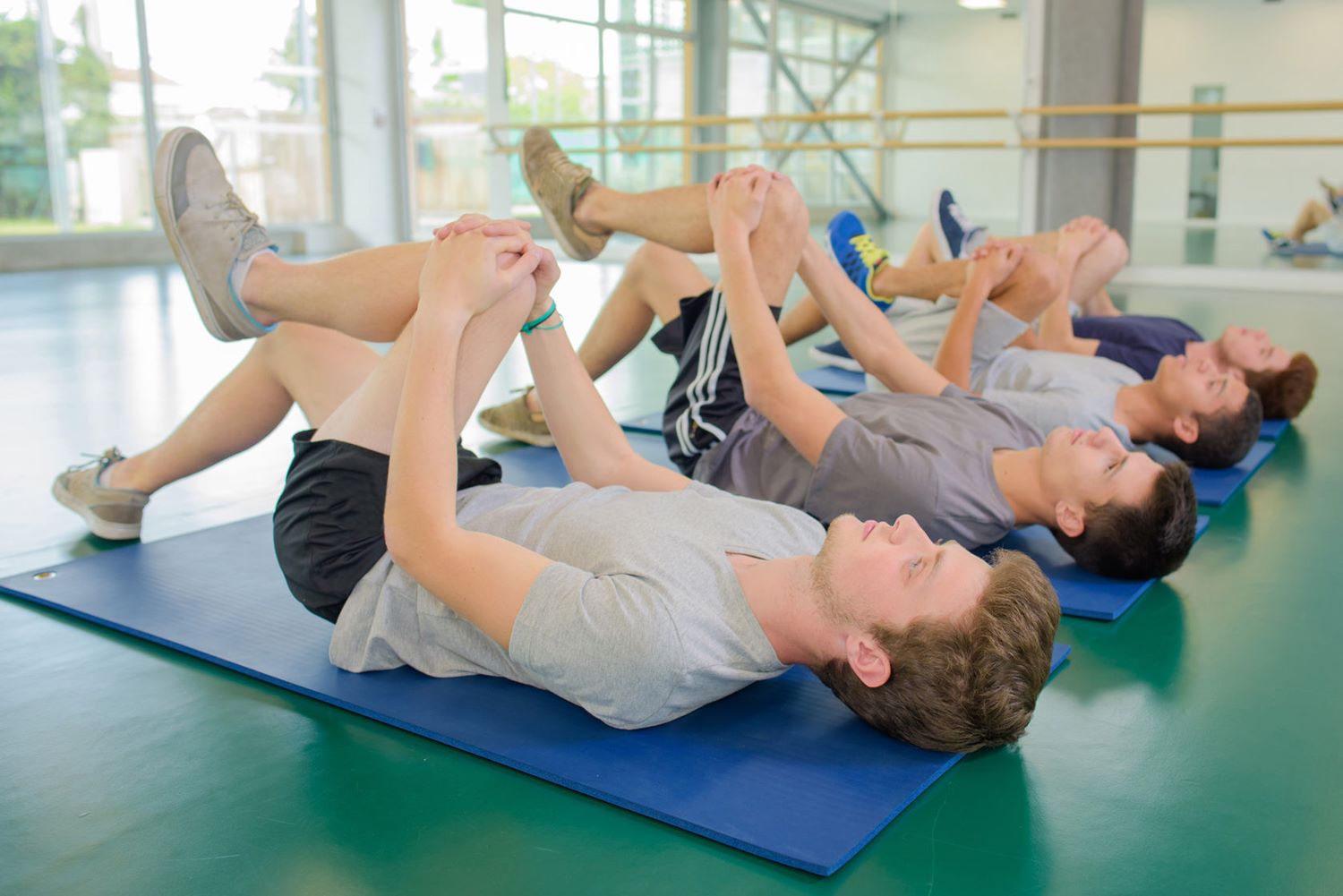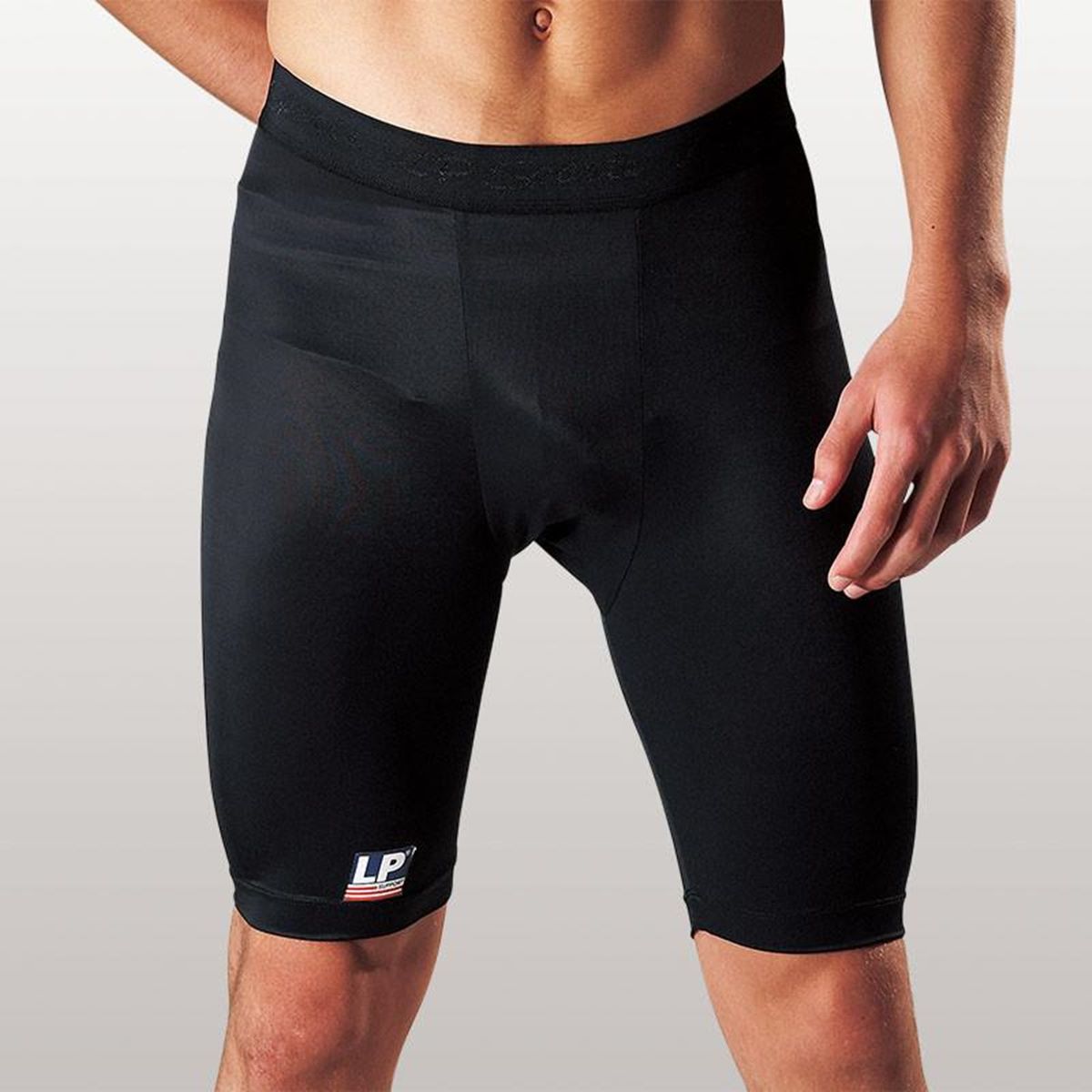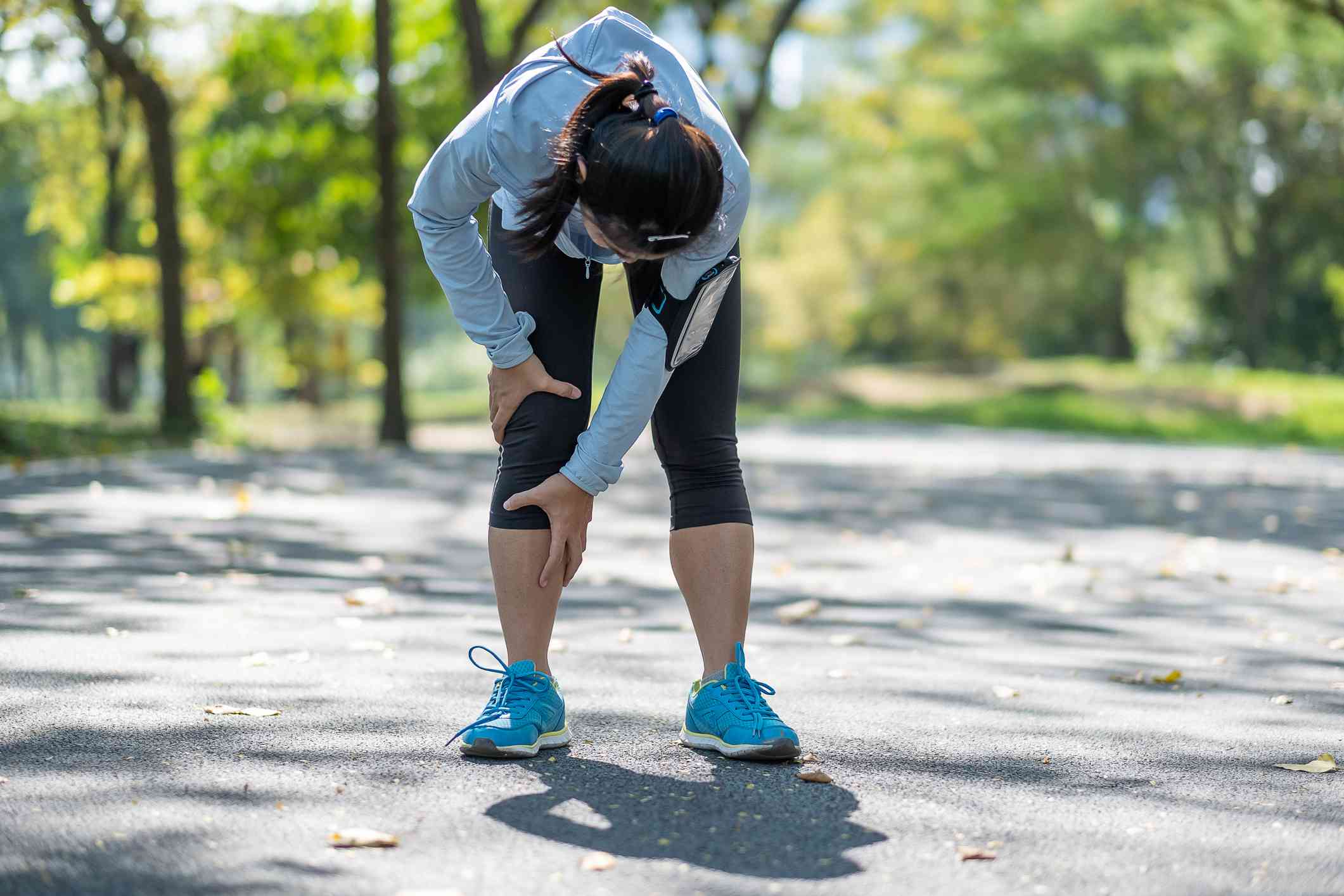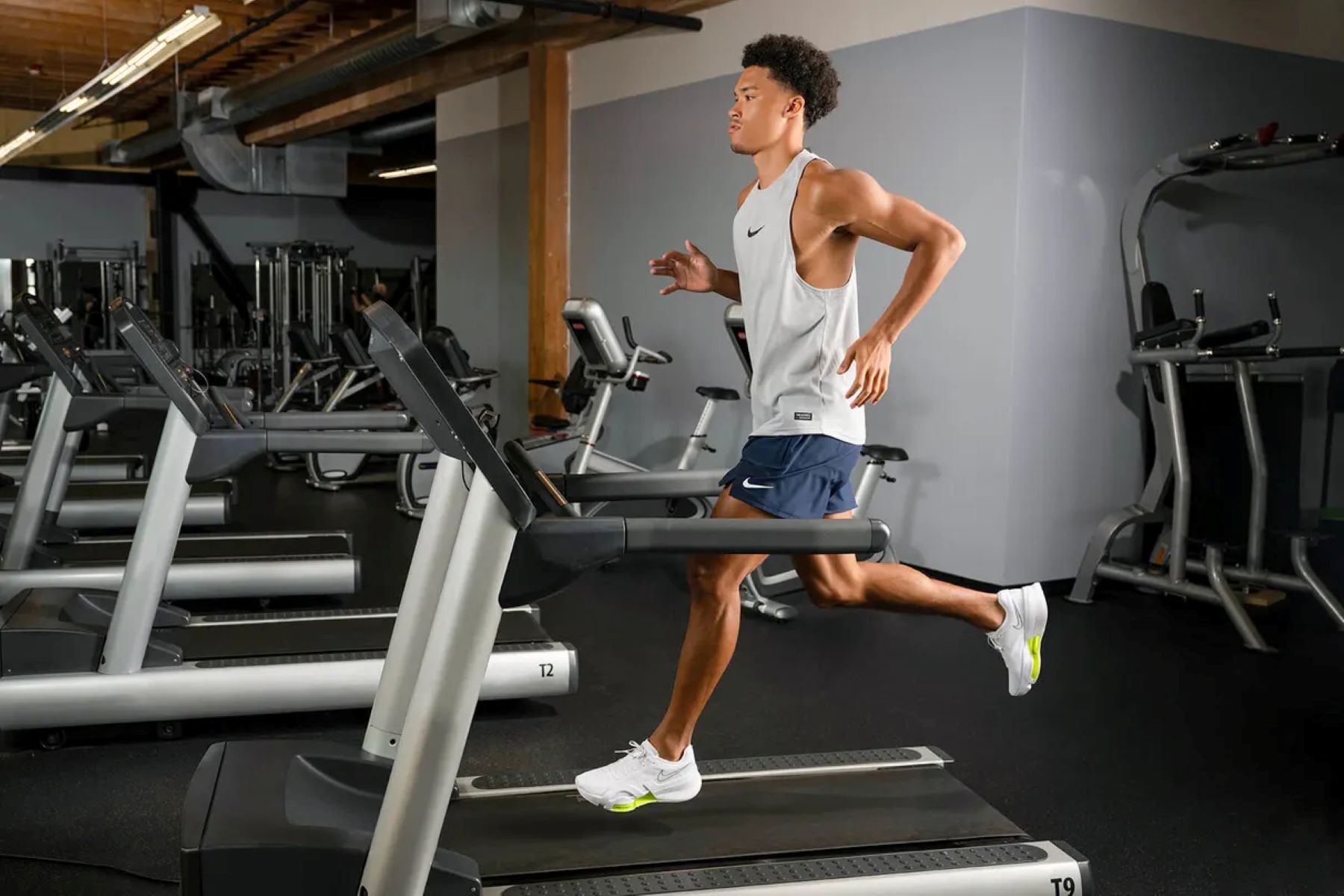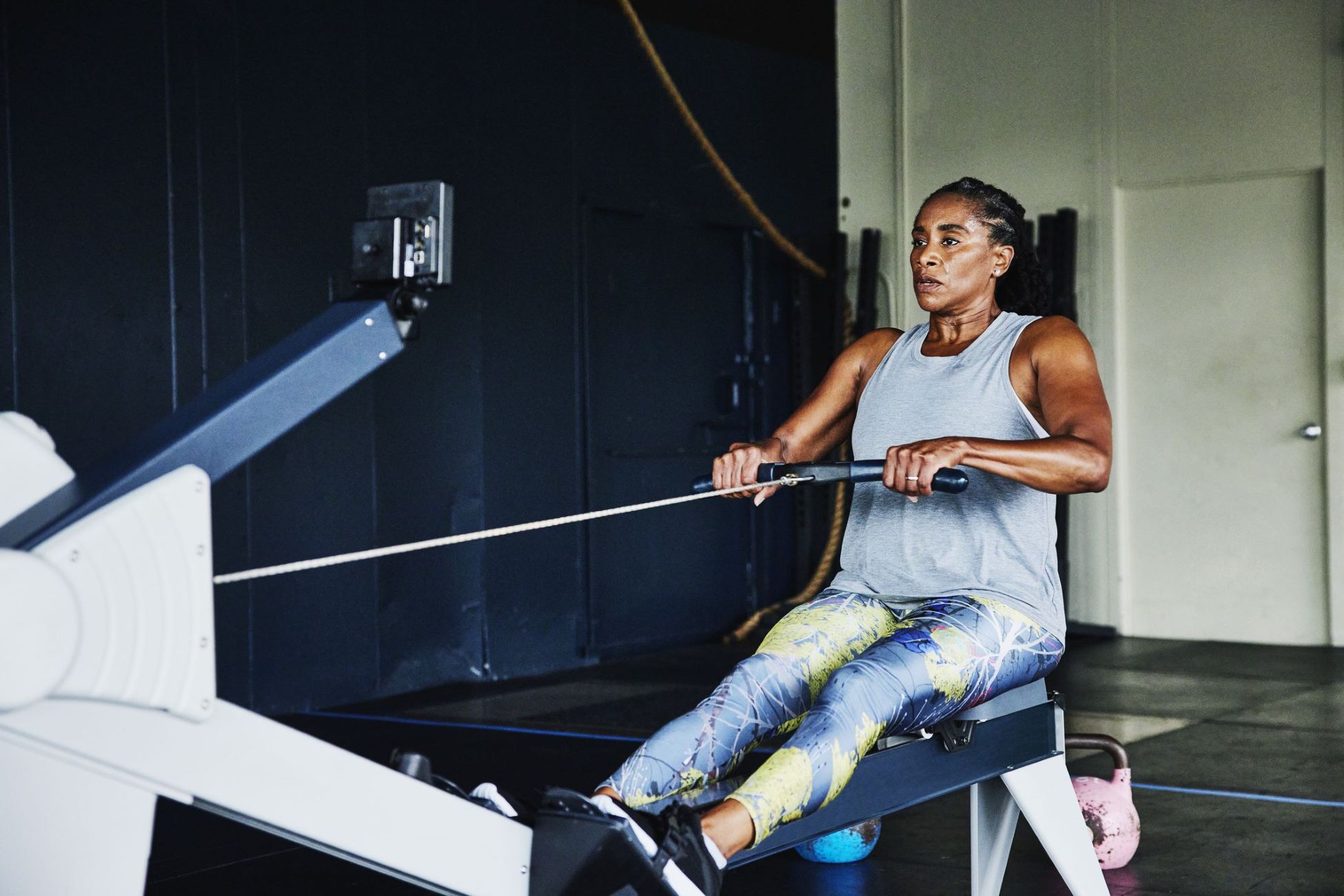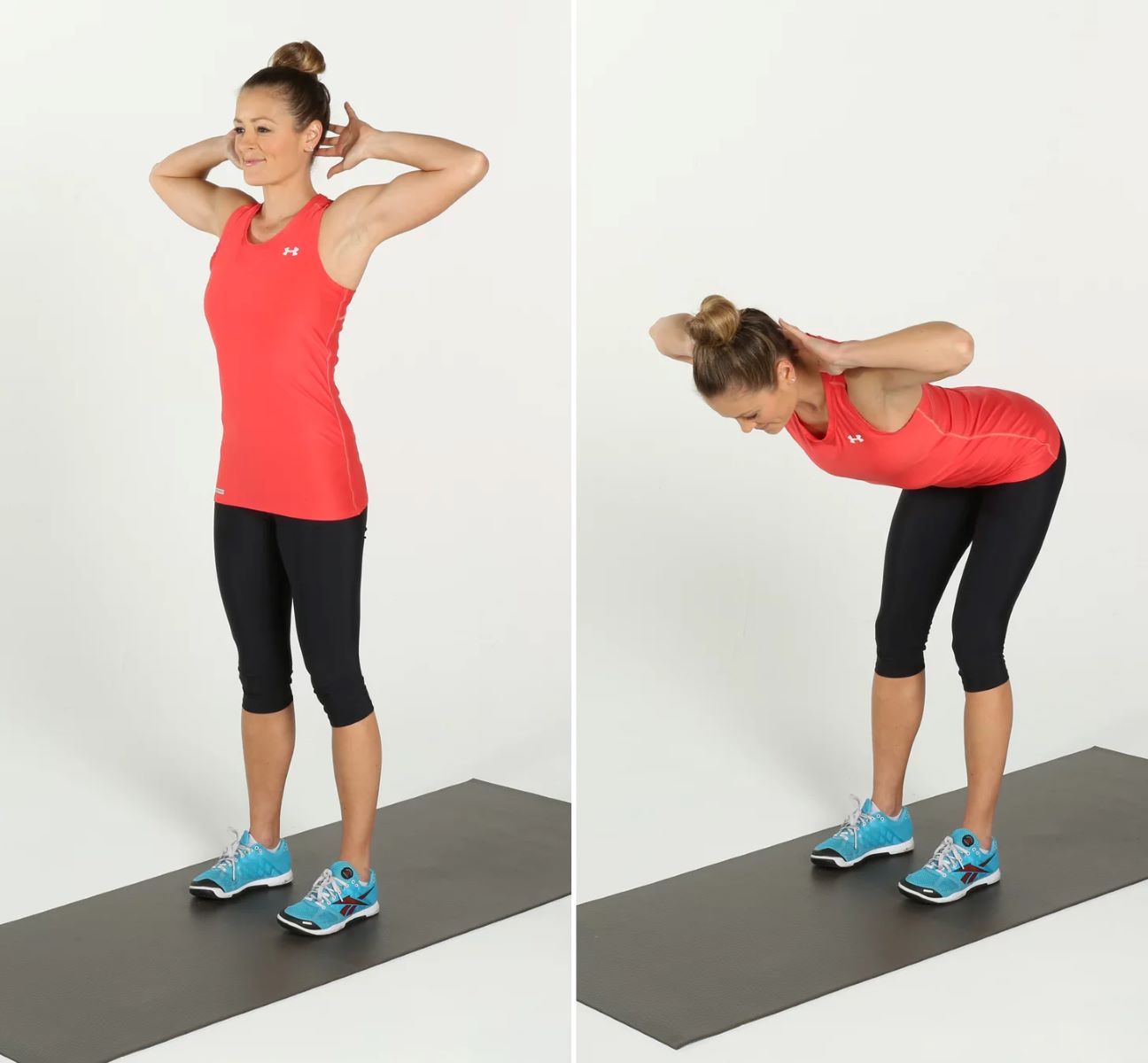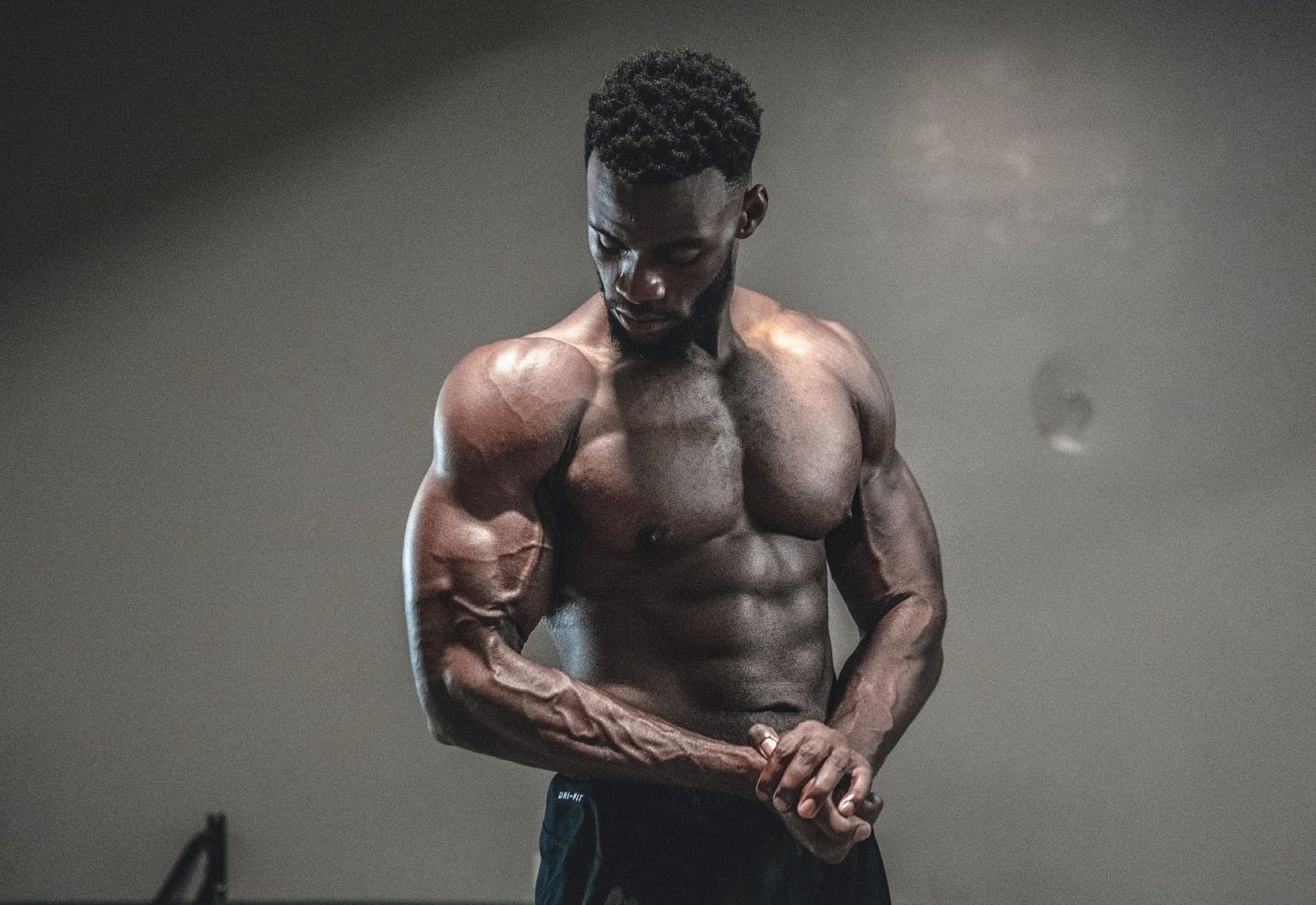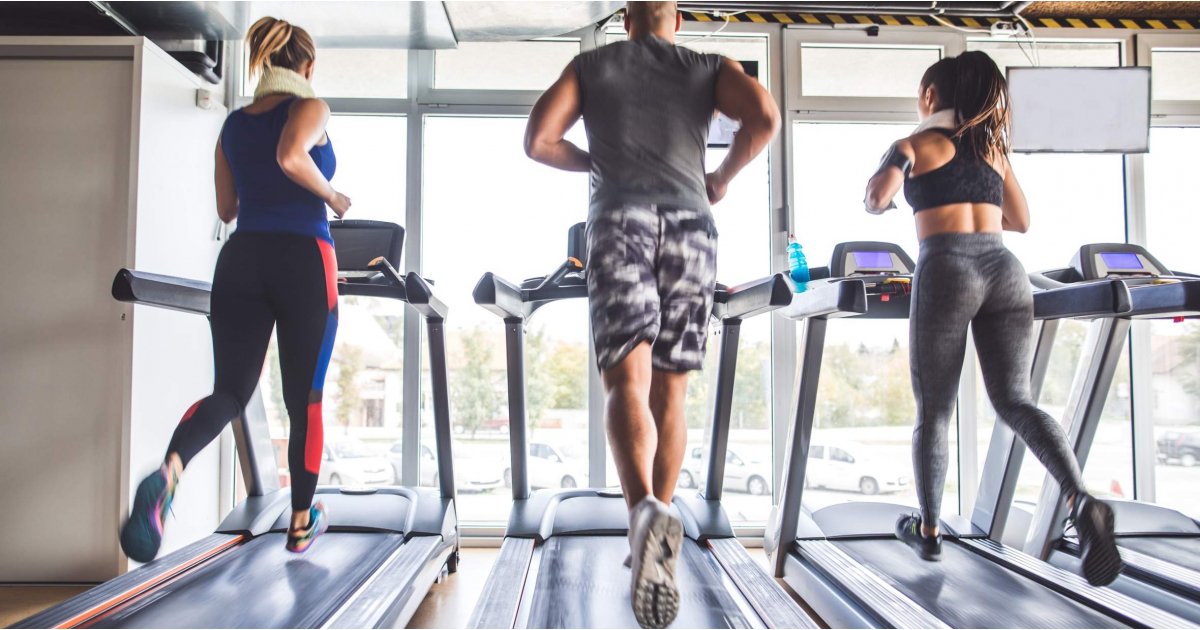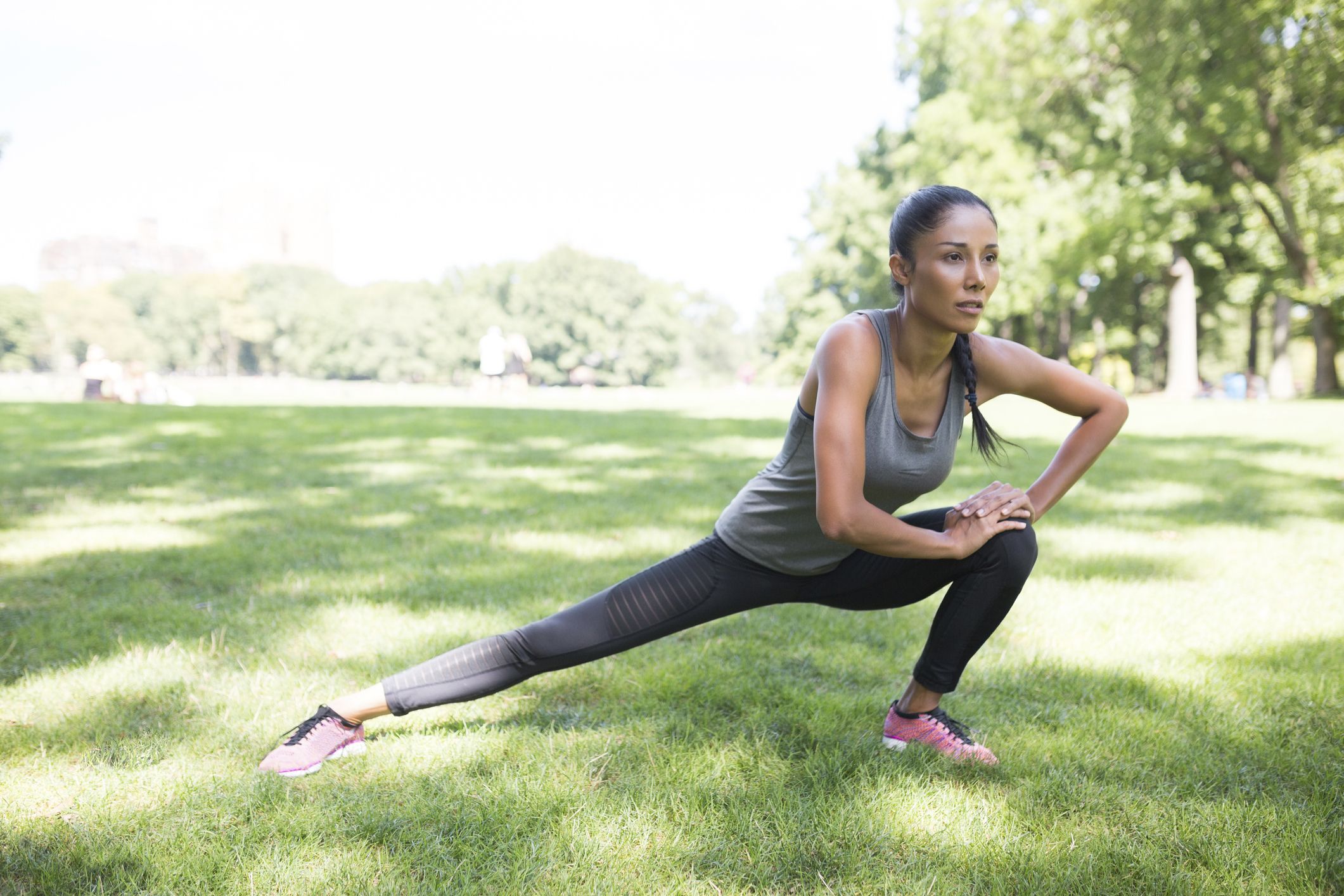Home>Misc>Featured>What Is The Best Exercise For Hamstrings?
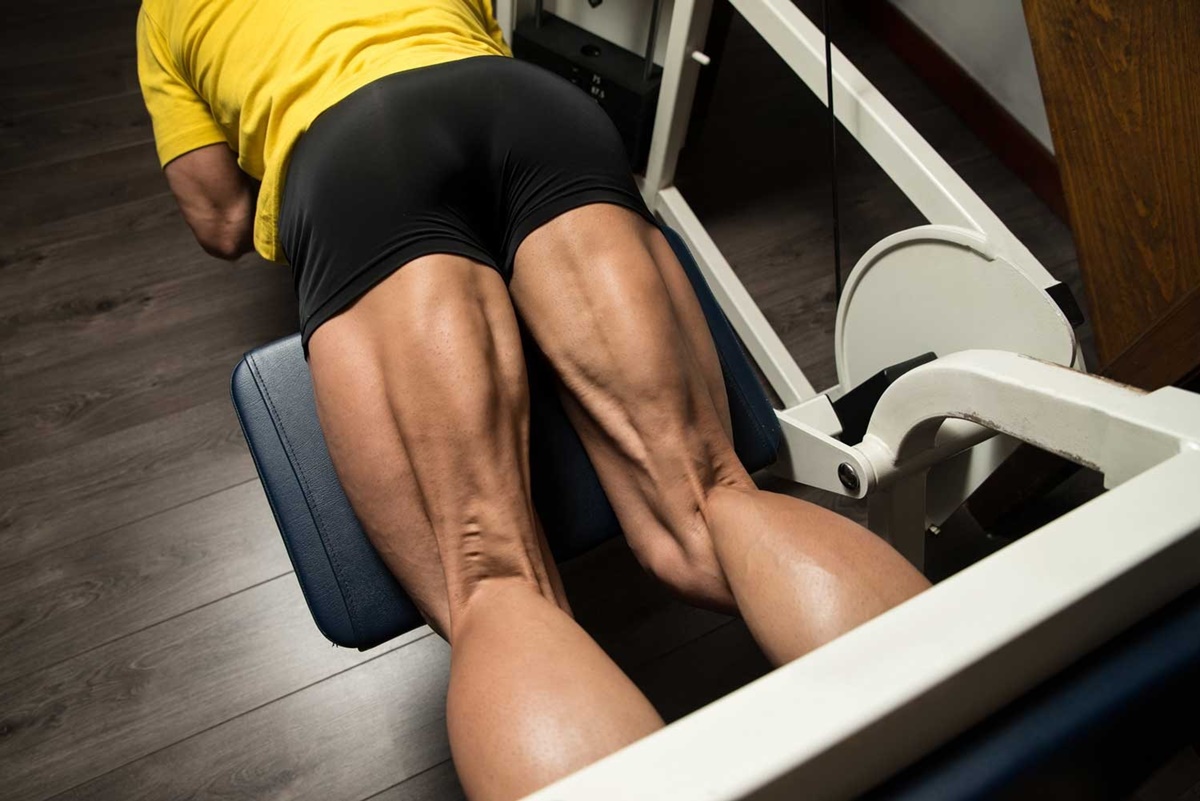

Featured
What Is The Best Exercise For Hamstrings?
Published: October 1, 2023
Discover the featured exercise for hamstrings that will help you strengthen and tone your leg muscles effectively. Find out more about the best workout for hamstrings!
Introduction
The hamstrings are an essential muscle group located on the back of your thighs. They play a pivotal role in various movements, such as running, jumping, and bending your knees. Having strong and flexible hamstrings not only improves athletic performance but also helps in preventing injuries and maintaining overall lower body functionality.
When it comes to training the hamstrings, it can be overwhelming to determine which exercises are the most effective. With numerous options available, it’s important to choose exercises that target the hamstrings from different angles and provide a balanced approach to training. In this article, we will explore the best exercises for the hamstrings and discuss their benefits and proper execution.
Before diving into the specific exercises, it’s crucial to understand the anatomy and function of the hamstrings. The hamstrings are actually a group of three muscles: the biceps femoris, semitendinosus, and semimembranosus. These muscles work together to extend the hips and flex the knees. They also play a significant role in stabilizing the pelvis and aiding in proper posture.
It’s important to note that the hamstrings are often underdeveloped or neglected in comparison to other muscle groups. This is partly due to the emphasis placed on training the quadriceps, which are located on the front of the thighs. Neglecting the hamstrings can lead to muscular imbalances and increase the risk of injuries, especially in activities that involve explosive movements or quick changes in direction.
The best approach to training the hamstrings is to incorporate a variety of exercises that target different areas within the muscle group. This not only helps in achieving overall development but also prevents plateaus and allows for continuous progress. Whether you’re an athlete looking to improve performance or someone wanting to strengthen their lower body, incorporating these exercises into your routine can help you achieve optimal results.
Importance of the Hamstrings
The hamstrings play a crucial role in the overall function and performance of the lower body. Understanding their importance can help you appreciate the value of incorporating hamstring exercises into your workout routine.
1. Functional Movement: The hamstrings are involved in various daily activities, such as walking, running, and climbing stairs. They help in extending the hips and flexing the knees, allowing for smooth and efficient movement. Strong and flexible hamstrings are essential for maintaining proper posture and performing these movements with control and power.
2. Athletic Performance: For athletes, having strong and resilient hamstrings is vital for enhancing sports performance. The hamstrings contribute significantly to explosive movements, such as sprinting and jumping. By improving hamstring strength and power, athletes can generate more force, increase their stride length, and enhance their overall speed and agility.
3. Injury Prevention: Weak or imbalanced hamstrings can lead to an increased risk of injuries, particularly in the lower body. The hamstrings work in conjunction with the quadriceps to ensure proper knee stability. Imbalances between these muscle groups can put extra strain on the knees and result in conditions like patellar tendinitis or anterior cruciate ligament (ACL) injuries. Strengthening the hamstrings can help maintain a healthy muscle balance and reduce the risk of these injuries.
4. Lower Back Support: The hamstrings also play a role in stabilizing the pelvis and providing support to the lower back. Weak hamstrings can lead to poor posture, which can contribute to lower back pain and discomfort. By strengthening the hamstrings, you can improve your core stability, maintain proper spinal alignment, and alleviate lower back issues.
5. Muscle Balance: Many individuals tend to overemphasize training their quadriceps, leading to muscle imbalances in the lower body. This can result in a range of problems, from restricted range of motion to increased risk of injuries. By dedicating adequate attention and effort to training the hamstrings, you can promote muscle balance, optimal joint function, and overall lower body strength.
Incorporating hamstring exercises into your regular workout routine not only helps with functional movements and athletic performance but also reduces the likelihood of injuries and improves overall muscle balance. By giving proper attention to this muscle group, you can enhance your lower body strength and achieve optimal physical performance.
Anatomy and Function of the Hamstrings
The hamstrings are a group of three muscles located at the back of the thigh. Understanding their anatomy and function is essential in order to effectively train and optimize their performance.
The three muscles that make up the hamstrings are the biceps femoris, semitendinosus, and semimembranosus. The biceps femoris is located on the outer side of the thigh, while the semitendinosus and semimembranosus are situated on the inner side.
The primary function of the hamstrings is hip extension and knee flexion. Hip extension occurs when you bring your thigh backward, like in the act of driving your leg back during a sprint. Knee flexion happens when you bend your knee, like during activities such as walking, running, or squatting.
Another important role of the hamstrings is in stabilizing the pelvis. It works in conjunction with other muscles, such as the glutes and core muscles, to maintain optimal pelvic alignment and stability during various movements.
During certain exercises or movements, the hamstrings may also engage to provide additional stability to the knees, supporting the ligaments and tendons in that area.
Due to its dual function of hip extension and knee flexion, the hamstrings are highly involved in explosive movements such as sprinting, jumping, and kicking. Strong and well-developed hamstrings can generate powerful force and contribute to enhanced performance in sports and physical activities.
It’s important to note that while the hamstrings work as a group, each muscle within the group has a slightly different function. The biceps femoris, which is divided into a short head and a long head, plays a significant role in hip extension. The semimembranosus and semitendinosus, on the other hand, are more involved in knee flexion.
In order to develop balanced strength and functional movement, it is crucial to incorporate exercises that target all the muscles within the hamstrings group. This includes exercises that focus on both hip extension and knee flexion, enabling comprehensive development.
Now that you have a better understanding of the anatomy and function of the hamstrings, you can approach your training with a more targeted approach. By incorporating a variety of exercises that target both hip extension and knee flexion, you can strengthen and optimize the performance of your hamstrings, enhancing your overall lower body function and athletic performance.
Factors to Consider for Hamstring Exercises
When it comes to selecting and performing hamstring exercises, there are several factors to consider in order to maximize their effectiveness and minimize the risk of injury. By understanding these factors, you can choose the right exercises and execute them correctly for optimal results.
1. Fitness Level: Your current fitness level should be taken into consideration when choosing hamstring exercises. Beginners may need to start with simpler exercises and gradually progress to more challenging ones as their strength and flexibility improve. It is important to listen to your body and not push yourself too hard, especially if you are new to exercise or have any pre-existing conditions.
2. Equipment Availability: Some hamstring exercises require specific equipment, such as resistance bands, stability balls, or machines. It is important to consider the equipment you have access to when selecting exercises. If you have limited equipment, there are still plenty of effective hamstring exercises that can be performed using bodyweight or basic gym equipment like dumbbells or barbells.
3. Range of Motion: The hamstrings have a wide range of motion, and it is important to choose exercises that target both hip extension and knee flexion. Including exercises that work through the full range of motion helps in developing balanced strength and flexibility in the hamstrings. It is also important to perform each exercise with proper form and avoid overstretching or compromising the joints.
4. Personal Goals: Your personal goals will also play a role in determining which hamstring exercises to include in your routine. If your goal is to build strength and muscle mass, exercises like Romanian deadlifts or glute-ham raises may be more suitable. However, if your focus is on improving flexibility and mobility, exercises like Swiss ball hamstring curls or single-leg Romanian deadlifts may be more beneficial.
5. Injury History: If you have any previous hamstring injuries or tightness, it is important to take extra caution when selecting exercises. Certain movements or exercises may aggravate an existing injury or put too much strain on your hamstrings. Consulting with a healthcare professional or a qualified trainer can help you identify exercises that are safe and suitable for your condition.
6. Variety and Progression: To avoid plateaus and boredom, it is important to incorporate a variety of hamstring exercises into your routine. This not only helps in targeting the muscles from different angles but also prevents overuse injuries and stimulates muscle growth. Gradually increasing the difficulty or intensity of the exercises over time is also important for continued progress and adaptation.
By considering these factors, you can choose the right hamstring exercises that align with your goals, fitness level, and available equipment. Remember to prioritize proper form, listen to your body, and consult with a professional if needed. With consistency and proper execution, you can develop strong, flexible, and functional hamstrings that support your overall lower body strength and athletic performance.
Best Exercises for the Hamstrings
When it comes to training the hamstrings, it’s important to incorporate a variety of exercises that target different areas within the muscle group. This ensures balanced development and maximizes the benefits for your lower body strength and performance. Here are some of the best exercises for the hamstrings:
- Romanian Deadlifts: This exercise primarily targets the hamstrings and also engages the glutes and lower back. Stand with feet hip-width apart, holding a barbell in front of your thighs. Hinge at the hips, maintaining a slight bend in the knees, and lower the barbell toward the floor. Keep your back straight and chest lifted. Once you feel a stretch in your hamstrings, return to the starting position by squeezing your glutes and driving your hips forward. Repeat for the desired number of reps.
- Glute-Ham Raises: This exercise focuses on the hamstrings and helps in building strength and stability. Begin by kneeling on a glute-ham developer or a stable bench, securing your ankles under the pads. Engage your hamstrings and glutes to lift your torso, lowering your upper body towards the ground. Control the movement as you lower back down and repeat for the desired number of reps.
- Hamstring Curls: Using a lying or seated hamstring curl machine, this exercise specifically isolates the hamstrings. Adjust the machine to fit your body and place your legs beneath the pads, with your knees just off the edge of the seat. Curl your legs up towards your glutes, contracting your hamstrings. Slowly lower back down and repeat the movement for the desired number of reps.
- Barbell Hip Thrusts: This exercise targets the glutes and hamstrings, helping in developing strength and power. Sit on the floor with your upper back resting against a bench, and position a barbell across your hips. Plant your feet firmly on the ground, hip-width apart. Drive through your heels, lifting your hips towards the ceiling, and squeeze your glutes at the top. Slowly lower your hips back down and repeat for the desired number of reps.
- Swiss Ball Hamstring Curls: Lie on your back with your heels resting on a Swiss ball. Raise your hips off the ground, keeping your body in a straight line. Flex your knees, rolling the ball in towards your glutes. Extend your legs back out and repeat for the desired number of reps. This exercise not only engages the hamstrings but also challenges your core stability.
- Single-Leg Romanian Deadlifts: Similar to the Romanian deadlifts, this variation targets one leg at a time, improving balance and stability. Stand on one leg, holding a dumbbell or kettlebell in the opposite hand. Hinge forward at the hips, extending your free leg straight behind you for balance. Lower the weight towards the floor while keeping a slight bend in the standing knee. Once you feel a stretch in your hamstring, engage your glutes and return to the starting position. Repeat on the other leg for the desired number of reps.
- Nordic Hamstring Curls: This exercise challenges the hamstrings eccentrically and requires a partner or a sturdy anchor to hold your ankles. Kneel on a soft surface, keeping your body in a straight line. Slowly lower your torso towards the floor, maintaining control, and using your hamstrings to resist the movement. Once you cannot control the lowering anymore, push yourself back up using your hands. Repeat for the desired number of reps.
- Good Mornings: Stand with feet hip-width apart and place a barbell across your upper back. Keeping your back straight and core engaged, hinge forward at the hips, bending your torso forward until you feel a stretch in your hamstrings. Push your hips forward to return to the starting position. Repeat for the desired number of reps.
- Stability Ball Leg Curls: Lie on your back with your heels resting on a stability ball. Lift your hips off the floor, keeping your body in a straight line. Curl the ball towards your glutes by bending your knees, engaging your hamstrings. Extend your legs back out and repeat for the desired number of reps. This exercise challenges your hamstrings while also engaging your core for stability.
- Single-Leg Swiss Ball Hamstring Curls: Similar to the stability ball leg curls, this exercise focuses on one leg at a time, enhancing balance and stability. Lie on your back with one leg extended and the other foot on a stability ball. Lift your hips off the floor and curl the ball towards your glutes by bending your knee. Extend your leg back out and repeat for the desired number of reps. Switch to the other leg and repeat.
Remember to perform each exercise with proper form and technique. Start with a weight or difficulty level that is appropriate for your fitness level and gradually increase as you get stronger and more comfortable with the movements. Always listen to your body and consult with a fitness professional if needed. By incorporating these exercises into your routine, you can develop strong, flexible, and functional hamstrings to support your overall lower body strength and athletic performance.
Romanian Deadlifts
Romanian deadlifts are an excellent exercise for targeting and strengthening the hamstrings, glutes, and lower back. They also improve hip mobility and help in developing proper lifting mechanics. By incorporating this compound movement into your routine, you can enhance your overall lower body strength and athletic performance.
To perform the Romanian deadlift:
- Start by standing with your feet shoulder-width apart, with a slight bend in your knees. You can either use a barbell, dumbbells, or kettlebells for resistance.
- Keep your core engaged, chest lifted, and shoulders down and back.
- Begin the movement by hinging at the hips, pushing your glutes back while maintaining a neutral spine. It’s important to emphasize the hip hinge movement rather than bending at the waist.
- Lower the weight in a controlled manner, allowing it to glide down the front of your legs until you feel a stretch in your hamstrings.
- Keep your back straight throughout the movement, avoiding rounding or arching of the spine.
- Once you feel the stretch in your hamstrings, engage your glutes and hamstring muscles to reverse the movement by driving your hips forward.
- Stand tall and squeeze your glutes at the top of the movement.
It’s important to note that the depth of the Romanian deadlift will vary depending on your flexibility and mobility. Focus on maintaining a flat back and feeling a deep stretch in your hamstrings without compromising your form.
When performing Romanian deadlifts, proper form is crucial to prevent injuries and maximize results. Here are a few tips to keep in mind:
- Keep your core engaged and maintain a neutral spine throughout the movement.
- Avoid using your lower back to lift the weight. Instead, focus on pushing your hips back and using your hamstrings and glutes to initiate the movement.
- Ensure that your shoulders are pulled back and down to maintain good posture.
- Control the descent of the weight and avoid bouncing or jerking movements.
Start with a lighter weight or no weight at all to master the form and gradually increase the load as you become more comfortable and stronger. Aim for 3-4 sets of 8-12 repetitions, resting for 60-90 seconds between sets.
Romanian deadlifts are an effective exercise for strengthening the hamstrings, improving hip mobility, and developing proper lifting mechanics. By incorporating this exercise into your lower body workout routine, you can enhance your overall lower body strength, stability, and athletic performance.
Glute-Ham Raises
Glute-Ham Raises are a highly effective exercise for targeting and strengthening the hamstrings, glutes, and lower back. They are particularly beneficial for athletes and individuals looking to improve their posterior chain strength, as well as enhance athletic performance and prevent injuries.
To perform glute-ham raises:
- Start by kneeling on a glute-ham developer (GHD) machine or placing your feet under a stable anchor, such as a heavy dumbbell or barbell.
- Position yourself so that your pelvis is on the pad, with your feet secured against the footplate and your upper thighs resting on the pad.
- Lower your upper body down towards the ground, keeping your back straight and core engaged.
- From this starting position, engage your hamstrings and glutes to lift your torso back up until your body is in line with your thighs.
- Lower back down under control and repeat the movement for the desired number of repetitions.
It’s important to note that glute-ham raises can be quite challenging, especially for beginners or those with weaker hamstrings. If you are struggling with the exercise, you can modify it by using a resistance band or asking a partner to hold your ankles for support.
When performing glute-ham raises, pay attention to the following tips:
- Maintain a neutral spine throughout the movement, avoiding any excessive arching or rounding of the back.
- Focus on squeezing your glutes and engaging your hamstrings to lift your body up, rather than relying solely on your lower back.
- Control the descent as you lower your body back down, keeping tension in your hamstrings and maintaining proper alignment.
- Keep your core engaged and breathing steadily throughout the exercise.
Start with 3-4 sets of 8-10 repetitions, resting for 60-90 seconds between sets. As you become more comfortable and stronger, you can increase the difficulty by adding weight or extending the range of motion.
Glute-ham raises are a highly effective exercise for targeting the hamstrings, glutes, and lower back. By incorporating this exercise into your lower body workout routine, you can develop strong and powerful hamstrings, improve your posterior chain strength, and enhance your athletic performance.
Hamstring Curls
Hamstring curls are a classic exercise that specifically targets the hamstrings. They can be performed using a hamstring curl machine, resistance bands, or even with just your bodyweight. Hamstring curls are a highly effective exercise for developing strength, definition, and flexibility in the hamstrings.
To perform hamstring curls using a machine:
- Adjust the machine to fit your body by setting the seat height and resistance level.
- Position yourself face down on the machine with the pad against the back of your lower legs, just above your heels.
- Grasp the handles on the machine for support and stabilisation.
- Begin the movement by flexing your knees and curling your heels towards your glutes while keeping your thighs stationary.
- Hold the contracted position for a brief moment, squeezing your hamstrings.
- Slowly lower your legs back to the starting position under control.
- Repeat for the desired number of repetitions.
If you don’t have access to a hamstring curl machine, you can perform standing or lying hamstring curls using resistance bands. Simply attach the bands around a secure anchor point, loop them around your ankles, and perform the same curling motion while keeping tension on the bands.
For those who prefer bodyweight exercises, you can perform hamstring curls lying on your back. Start by lying flat on the ground with your arms by your sides for support. With your heels resting on a stability ball or a gliding surface, lift your hips off the ground and roll the ball in towards your glutes by engaging your hamstrings. Extend your legs back out and repeat the movement.
When performing hamstring curls, it’s important to focus on the following:
- Maintain proper form throughout the movement, avoiding any excessive swinging or momentum.
- Engage your core and keep your hips stable to isolate the hamstrings.
- Control the eccentric (lowering) phase of the movement, resisting the urge to drop your legs.
- Keep a steady breathing pattern throughout the exercise.
Include hamstring curls in your lower body workout routine with 3-4 sets of 12-15 repetitions, resting for 60-90 seconds between sets. As you become stronger and more comfortable with the exercise, you can increase the resistance or the number of sets for added challenge.
Hamstring curls are an excellent exercise for targeting and strengthening the hamstrings. Whether using a machine, resistance bands, or bodyweight, incorporating hamstring curls into your routine can help build strong, toned, and flexible hamstrings.
Barbell Hip Thrusts
Barbell hip thrusts are a highly effective exercise for targeting and strengthening the glutes and hamstrings. This compound movement is great for building lower body strength, improving hip thrust power, and enhancing athletic performance.
To perform barbell hip thrusts:
- Start by sitting on the ground with your upper back against a bench or a padded surface.
- Position a barbell across your hips, ensuring comfort and stability.
- Place your feet hip-width apart on the floor, flat on the ground.
- Keep your core engaged and your shoulders pulled back and down.
- Press your feet into the ground, driving through your heels, and lift your hips towards the ceiling.
- Squeeze your glutes at the top of the movement and hold for a brief moment.
- Lower your hips back down under control and repeat the movement for the desired number of repetitions.
Throughout the exercise, focus on maintaining a neutral spine and avoiding arching or rounding of the back. It’s important to engage your glutes and hamstrings to lift your hips, rather than relying solely on your lower back.
Barbell hip thrusts can also be performed with the aid of resistance bands or without any weight for beginners. Simply loop a resistance band around your thighs, just above your knees, and perform the hip thrust movement with the band providing extra resistance.
Here are some tips for performing barbell hip thrusts effectively:
- Start with a lighter weight and gradually increase the load as you become more comfortable and stronger with the exercise.
- Position the barbell correctly across your hips to ensure stability and minimize discomfort.
- Engage your core and maintain proper form throughout the movement, avoiding any excessive arching or rounding of the back.
- Control the descent as you lower your hips back down to the ground, keeping tension in your glutes and maintaining proper alignment.
Include barbell hip thrusts in your lower body workout routine with 3-4 sets of 8-12 repetitions, resting for 60-90 seconds between sets. As you become more comfortable and stronger, increase the difficulty by adding more weight or extending the range of motion.
Barbell hip thrusts are an effective exercise for targeting and strengthening the glutes and hamstrings. By incorporating this compound movement into your routine, you can develop strong and powerful posterior chain muscles, enhance your lower body strength and power, and ultimately improve your athletic performance.
Swiss Ball Hamstring Curls
Swiss ball hamstring curls are a challenging yet highly effective exercise for targeting and strengthening the hamstrings and glutes. They also engage the core muscles, promoting stability and balance. By incorporating this exercise into your routine, you can improve hamstring strength and stability, enhance lower body function, and help prevent injuries.
To perform Swiss ball hamstring curls:
- Start by lying flat on the ground with your arms by your sides.
- Place a Swiss ball under your heels and lift your hips off the ground, creating a straight line from your shoulders to your knees.
- Engage your core muscles, and keeping your body in a straight line, squeeze your glutes and hamstrings to roll the ball towards your glutes.
- Once you have fully curled the ball towards your glutes, pause for a brief moment, and then reverse the movement, extending your legs back out to the starting position.
- Repeat for the desired number of repetitions.
During the exercise, focus on maintaining stability and control throughout the movement. Keep a neutral spine and avoid arching or sagging your lower back. Engage your core muscles to stabilize your body and prevent excessive swinging or momentum.
If you find this exercise too challenging, you can modify it by performing the movement with one leg at a time. This variation allows you to focus on each leg individually and gradually build strength and stability.
Here are a few tips to perform Swiss ball hamstring curls effectively:
- Start with a slower pace to ensure proper form and control during the movement.
- Focus on squeezing your hamstrings and glutes as you curl the ball towards your glutes.
- Keep your hips lifted and your core engaged throughout the exercise.
- Avoid overarching or sagging your lower back during the movement.
Include Swiss ball hamstring curls in your lower body workout routine with 3-4 sets of 10-12 repetitions, resting for 60-90 seconds between sets. As you become more comfortable and stronger, you can increase the number of sets or repetitions for added challenge.
Swiss ball hamstring curls are a challenging and effective exercise for strengthening the hamstrings, glutes, and core muscles. Incorporating this exercise into your routine can help enhance hamstring strength, stability, and overall lower body function.
Single-Leg Romanian Deadlifts
Single-leg Romanian deadlifts are a powerful exercise for targeting and strengthening the hamstrings, glutes, and core muscles. This unilateral movement helps improve balance, stability, and muscle coordination, making it a valuable exercise for athletes and individuals of all fitness levels.
To perform single-leg Romanian deadlifts:
- Stand on one leg with a slight bend in the knee and your opposite hand holding a dumbbell or kettlebell.
- Keep your core engaged and maintain a neutral spine throughout the movement.
- Hinge forward at the hips, extending your free leg straight behind you for balance.
- Lower the weight towards the floor, while keeping a slight bend in the standing knee.
- Once you feel a stretch in your hamstring, engage your glutes and push through your standing foot to return to the starting position.
- Repeat on the other leg for the desired number of repetitions.
Throughout the exercise, focus on maintaining stability and control. Keep your core engaged to stabilize your body and avoid any excessive rotation or tilting. It’s important to emphasize the hip hinge movement and keep the weight close to your body for proper form.
Here are a few tips to perform single-leg Romanian deadlifts effectively:
- Start with a lighter weight or no weight at all to master the movement and maintain stability.
- Keep your gaze focused on a fixed point in front of you to assist with balance and stability.
- Imagine your body forming a straight line from the top of your head to your extended leg, maintaining good posture throughout the movement.
- Avoid letting your shoulders round or your lower back excessively arch during the exercise.
Include single-leg Romanian deadlifts in your lower body workout routine with 3-4 sets of 10-12 repetitions per leg, resting for 60-90 seconds between sets. As you become more comfortable and stronger, you can increase the difficulty by gradually adding weight or performing the exercise on an unstable surface.
Single-leg Romanian deadlifts are a challenging yet highly effective exercise for developing strength, stability, and coordination in the hamstrings, glutes, and core muscles. By incorporating this exercise into your routine, you can improve your unilateral strength, balance any muscular imbalances, and enhance your overall lower body performance.
Nordic Hamstring Curls
Nordic hamstring curls are a highly effective exercise for targeting and strengthening the hamstrings, particularly the eccentric or lengthening phase of the muscle. This exercise helps to improve hamstring strength, prevent injuries, and enhance lower body performance.
To perform Nordic hamstring curls:
- Start by kneeling on a soft surface, with your feet tucked under a secure anchor, such as a partner holding your ankles or hooking your feet under a sturdy object.
- Keeping your body straight and your core engaged, slowly lower your torso towards the ground by bending at the hips and maintaining control throughout the movement.
- Use your hamstrings to resist the movement and control the descent. Avoid dropping quickly to the ground.
- Once you can no longer control the lowering, use your hands to push yourself back up to the starting position, engaging your hamstrings.
- Repeat for the desired number of repetitions.
During the exercise, it’s important to focus on maintaining proper form and control. Keep your core engaged and your body in a straight line throughout the movement. Avoid any excessive arching or rounding of the back, as this can compromise the effectiveness of the exercise.
If you find Nordic hamstring curls too challenging initially, you can modify the exercise by placing a yoga mat or cushion in front of you to soften the impact as you lower your body towards the ground. As you progress and become stronger, gradually reduce the cushion or mat thickness to increase the difficulty of the exercise.
Here are a few tips to perform Nordic hamstring curls effectively:
- Start with 3-4 sets of 6-8 repetitions, focusing on quality over quantity.
- Control the lowering phase of the movement, allowing your hamstrings to lengthen under tension.
- Engage your core and maintain a straight line from your head to your heels throughout the exercise.
- Use your hands to push yourself back up once you reach the end of your range of motion.
Incorporate Nordic hamstring curls into your lower body workout routine once or twice a week. Focus on gradually increasing the challenge by lowering yourself closer to the ground and reducing the reliance on your hands for assistance.
Nordic hamstring curls are a highly effective exercise for strengthening the hamstrings, improving eccentric strength, and reducing the risk of hamstring injuries. By incorporating this exercise into your routine, you can develop strong and resilient hamstrings, enhancing your lower body performance and overall athletic ability.
Good Mornings
Good mornings are a classic exercise that primarily targets the hamstrings and lower back while also engaging the glutes and core. They are an effective way to build strength, stability, and flexibility in the posterior chain muscles. Incorporating good mornings into your workout routine can improve hamstring strength, enhance posture, and help prevent lower back injuries.
To perform good mornings:
- Start by standing with your feet shoulder-width apart, placing a barbell across your upper back, resting just above your traps.
- Keep your core engaged, your chest lifted, and your shoulders pulled back and down.
- Hinge forward at the hips, pushing your glutes back while maintaining a slight bend in your knees.
- Lower your torso towards the ground while keeping your back straight and your gaze forward.
- Once you feel a stretch in your hamstrings and a mild tension in your lower back, use your hamstrings and glutes to bring your body back to the starting position.
- Repeat for the desired number of repetitions.
During the exercise, it’s important to focus on maintaining proper form and control. Avoid rounding or arching your back and don’t let your knees collapse inward. Engage your core muscles to stabilize your body and keep your neck in a neutral position.
If you’re new to good mornings or want to modify the exercise, you can start with bodyweight-only or use lighter dumbbells. This allows you to become familiar with the movement pattern and gradually increase the load as you become more comfortable and stronger.
Here are a few tips to perform good mornings effectively:
- Start with a lighter weight and focus on mastering the movement and maintaining good form.
- Perform the exercise in a slow and controlled manner, emphasizing the hip hinge movement.
- Keep your core engaged and your back straight throughout the exercise.
- Always use a spotter or safety bars when using heavy weights to ensure safety.
Include good mornings in your lower body or full-body workout routine with 3-4 sets of 8-12 repetitions, resting for 60-90 seconds between sets. As you become more comfortable and stronger, gradually increase the weight and challenge yourself with heavier loads.
Good mornings are a highly effective exercise for developing strength and flexibility in the hamstrings and lower back. By incorporating this exercise into your routine, you can build strong and resilient posterior chain muscles, improve lower body function, and reduce the risk of lower back injuries.
Stability Ball Leg Curls
Stability ball leg curls are a great exercise for targeting and strengthening the hamstrings while also engaging the glutes and core. This exercise not only builds strength in the posterior chain muscles but also improves stability and balance. By incorporating stability ball leg curls into your routine, you can enhance hamstring strength and stability, improve lower body function, and reduce the risk of injuries.
To perform stability ball leg curls:
- Start by lying on your back with your arms by your sides and heels resting on a stability ball.
- Lift your hips off the ground, engaging your glutes and core to form a straight line from your shoulders to your heels.
- Bend your knees, rolling the ball towards your glutes using your hamstrings while maintaining control throughout the movement.
- Pause for a brief moment, then extend your legs back out to the starting position.
- Repeat for the desired number of repetitions.
During the exercise, focus on maintaining stability and control. Keep your hips lifted and your core engaged to stabilize your body. Avoid any excessive arching or sagging of the lower back during the movement.
If you find stability ball leg curls too challenging initially, you can modify the exercise by performing them with both legs instead of one. This variation allows you to focus on building stability and gradually progress to single-leg stability ball leg curls.
Here are a few tips to perform stability ball leg curls effectively:
- Start with 3-4 sets of 10-12 repetitions, focusing on quality of movement rather than quantity.
- Control the rolling of the ball towards your glutes, using your hamstrings.
- Keep your hips lifted and your core engaged throughout the exercise.
- Avoid overarching or sagging your lower back during the movement.
Incorporate stability ball leg curls into your lower body workout routine once or twice a week. Focus on gradually increasing the number of repetitions or sets and challenging your stability and control.
Stability ball leg curls are an effective exercise for targeting and strengthening the hamstrings while promoting stability and balance. By incorporating this exercise into your routine, you can develop strong and functional hamstrings, enhance lower body performance, and reduce the risk of injuries.
Single-Leg Swiss Ball Hamstring Curls
Single-leg Swiss ball hamstring curls are a challenging yet effective exercise for targeting and strengthening the hamstrings, glutes, and core muscles. This exercise improves balance, stability, and muscle coordination by working one leg at a time. By incorporating single-leg Swiss ball hamstring curls into your routine, you can enhance hamstring strength, stability, and overall lower body function.
To perform single-leg Swiss ball hamstring curls:
- Start by lying on your back with your arms by your sides and your heels resting on top of a Swiss ball.
- Lift your hips off the ground, creating a straight line from your shoulders to your knees.
- Extend one leg straight up towards the ceiling, while keeping the other leg resting on the ball.
- Engage your core and squeeze your glutes, then bend your knee and roll the ball towards your glutes using your hamstrings.
- Pause for a brief moment, then extend your leg back out to the starting position.
- Repeat on the other leg for the desired number of repetitions.
During the exercise, focus on maintaining stability and control, keeping your hips lifted and your core engaged. Avoid overarching or sagging your lower back, and focus on using your hamstrings to control the movement of the ball.
If you find single-leg Swiss ball hamstring curls too challenging initially, you can modify the exercise by performing it with both legs on the ball. This variation allows you to build stability and gradually progress to single-leg curls.
Here are a few tips to perform single-leg Swiss ball hamstring curls effectively:
- Start with 3-4 sets of 8-10 repetitions per leg, focusing on proper form and control.
- Control the rolling of the ball towards your glutes, engaging your hamstrings.
- Keep your hips lifted and your core engaged throughout the exercise.
- Avoid overarching or sagging your lower back during the movement.
Incorporate single-leg Swiss ball hamstring curls into your lower body workout routine once or twice a week. Focus on gradually increasing the number of repetitions or sets, challenging your stability and control, and progressing to more advanced variations.
Single-leg Swiss ball hamstring curls are an effective exercise for strengthening the hamstrings, glutes, and core muscles while promoting balance and stability. By incorporating this exercise into your routine, you can develop strong, stable, and functional hamstrings, enhancing your overall lower body strength and performance.
Conclusion
The hamstrings are a crucial muscle group in the lower body that plays a significant role in various movements and athletic performance. Targeting and strengthening the hamstrings through targeted exercises are important for building lower body strength, improving stability, and reducing the risk of injuries.
In this article, we explored the best exercises for the hamstrings and discussed their benefits and proper execution. From Romanian deadlifts to stability ball leg curls, each exercise offers unique advantages in targeting and developing the hamstrings, glutes, and other associated muscle groups.
It’s important to consider factors such as fitness level, equipment availability, and personal goals when selecting hamstring exercises. By incorporating a variety of exercises, including compound movements and isolation exercises, you can achieve balanced development and optimize your lower body strength.
Remember, when performing hamstring exercises, it’s crucial to maintain proper form and technique. Engage your core, listen to your body, and start with appropriate weight or difficulty levels for your fitness level. Gradually increase the intensity, weight, or difficulty as you become stronger and more comfortable with the movements.
By consistently incorporating the best exercises for the hamstrings into your workout routine, you can develop strong, flexible, and functional hamstrings, enhance lower body strength and stability, and improve overall athletic performance. Take these exercises as an opportunity to challenge yourself, progress gradually, and enjoy the benefits of a well-rounded lower body workout.
